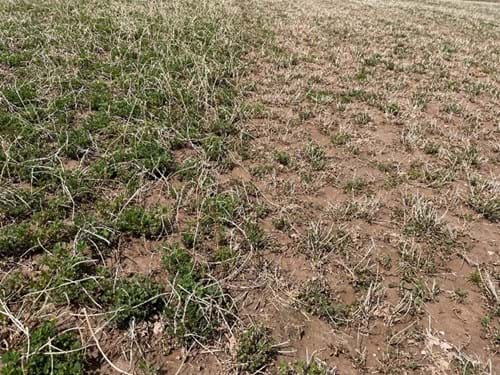Alfalfa Winter Survival: Setting Yourself Up for Success
BY Branden Furseth, Regional Agronomist
It is the middle of summer, but not too early to start thinking about winter survival plans for alfalfa stands. Mother Nature can deal us a bad hand no matter our level of preparation, but we often find ourselves in a gray area where details matter. Our actions now have a large impact on what we will see next spring. The first spring growth of an alfalfa plant relies on energy that was stored in the root all winter. Our goal in the fall is to bank as much energy as possible into the plant. Think of the root as a fuel tank that needs to be full going into winter. With that in mind, here are some tips for giving your alfalfa stands the best odds for success.
- Keep your soil pH in check with a target of 6.8. Alfalfa is sensitive to pH and proper liming usually covers our calcium and magnesium needs. Proper soil pH enables our next topic.
- Maintain a robust fertility program. A well-fed plant is the best defense against stress. Focus on maintaining adequate levels of potassium, phosphorus, sulfur and boron. The American Society of Agronomy’s Alfalfa Management Guide states that each dry ton of alfalfa harvested removes 58 lbs. of potash and 14 lbs. of phosphate. It adds up fast!
- Manage your cutting schedule for 8+ inches of regrowth going into winter or refrain from cutting after Sept 1. Each time we cut stored root energy is consumed during regrowth. Photosynthesis then regenerates the root reserves and is generally considered to be adequate at about 8” of regrowth. Anything less leaves the fuel tank partially full. Regrowth also traps snow during the winter, providing excellent insulation from temperature swings.
- If you maintain a strict sub-30 day cutting schedule, you are asking the root system to cycle quickly. Taking at least one crop to 30+ days can take the edge off.
- Plant new seeding at the appropriate time. Most of us will get the desired 6 weeks of growth on a new stand if we plant between August 1st and the 15th.

Photo from spring 2022: Alfalfa on the right was cut on approximately Oct 1, 2021, reducing winter hardiness.
